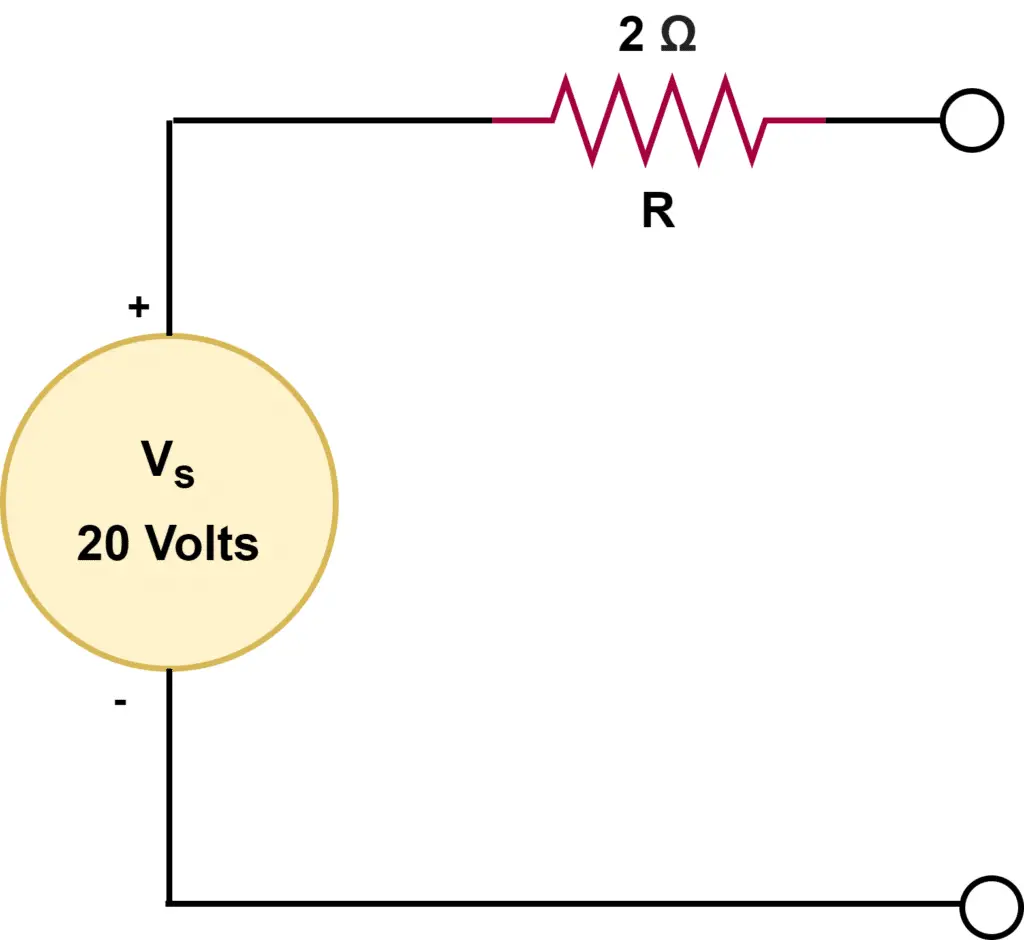Source Transformation is a technique of replacing one source with an equivalent source. It is possible to replace a practical voltage source with an equal practical current source. Also, we can replace a practical current source with a voltage source.
What is a Voltage Source?
We can represent a voltage source by an ideal voltage source in series with an internal resistance or impedance. A practical voltage source has a finite resistance or impedance, however, an ideal voltage source has zero impedance or resistance.
The output voltage of a practical voltage source depends on the load current. In the case of an ideal voltage source, the output voltage is independent of the load current. The Cells, batteries, and generators are examples of the practical voltage source, and the output voltage of these devices drops with an increase in the load current.
What is a Current source?
The voltage source has a resistance in the series with the source. In the case of a practical current source, the current source has an internal resistance in parallel with the source. An ideal current source has infinite internal resistance.
However, a practical current source has a finite value of internal resistance. In a practical current source, some parts of the source current get diverted towards the internal resistance and thus, the net current from the current source to the load is always less than the current delivering capacity of the current source.
Proof of voltage source and current source mutually transferable
Let’s take an example to prove the transformation proof of the voltage source to a current source and vice versa.
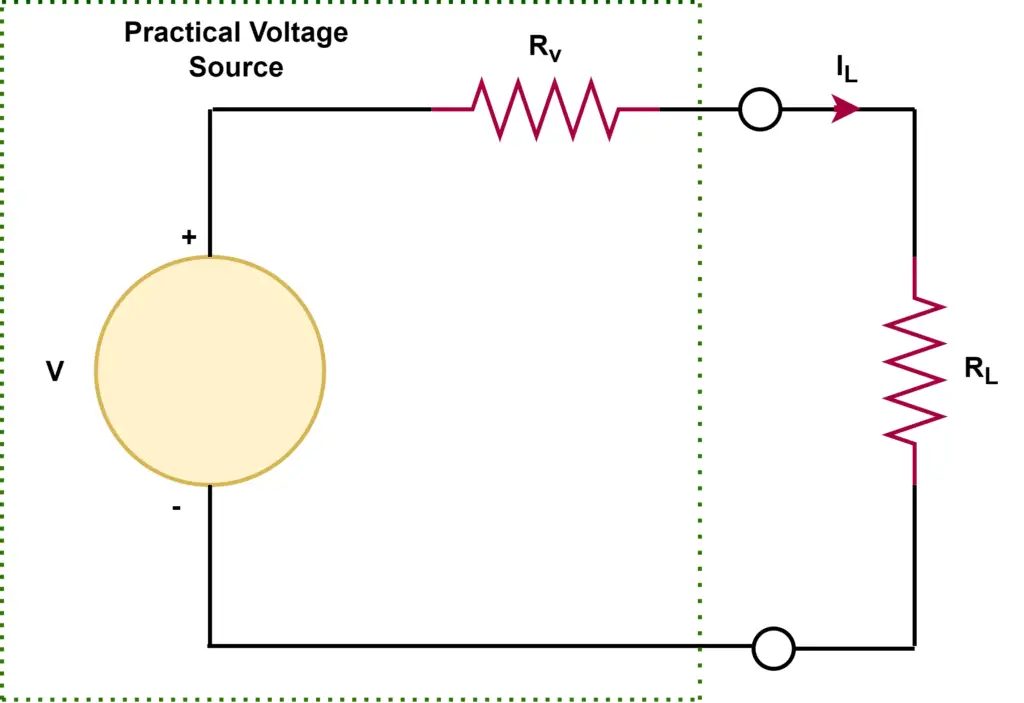
The above figure represents a practical voltage source in series with the internal resistance RV, The load current can be given by the following equation:

Now, we take a current source and calculate the load current. The circuit diagram of a practical current source is given below.
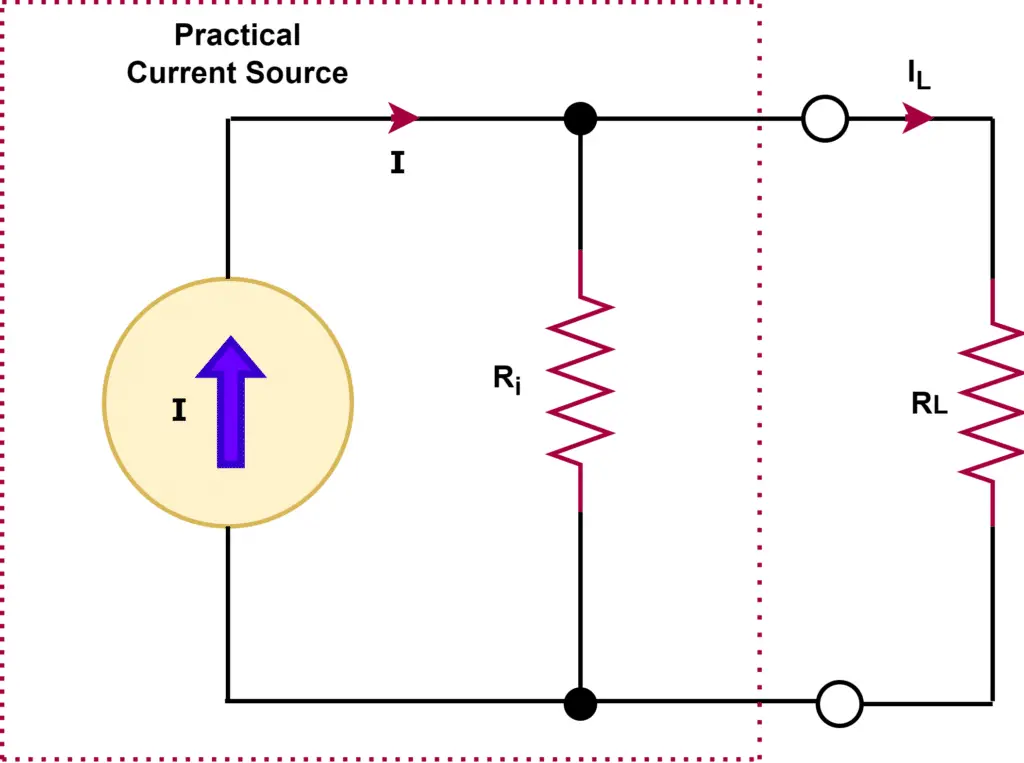
We can calculate the load current using the current division rule.

The voltage source and current source become equal if equation 1 & equation 2 are equal.

From equation 3, it is clear that the LHS and RHS will be equal if,

Therefore, we will get,

Thus, the voltage source with the voltage V and internal resistance RV can be replaced by a current source I with the internal resistance Ri connected in parallel with a current source.
Source Transformation: Conversion of Voltage Source into Current Source
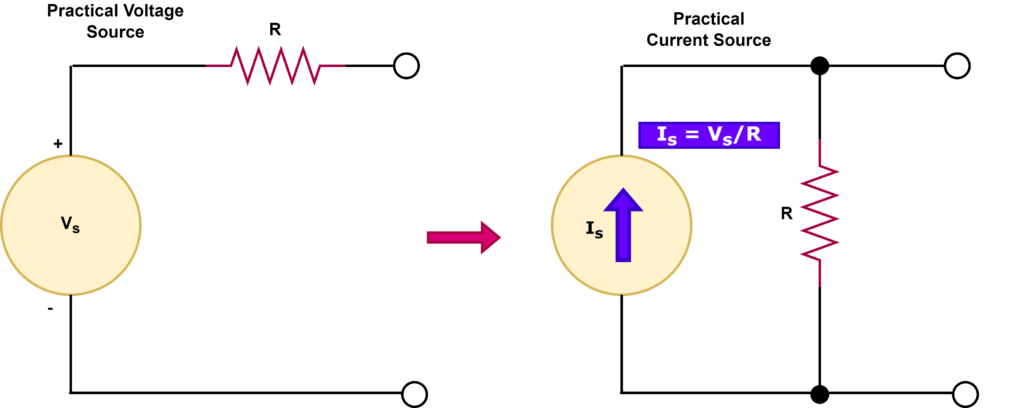
To convert a voltage source into a current source, the resistance connected in the series with a voltage source is connected in parallel with a current source. The magnitude of current in the current source can be calculated using the below-given formula.

Example,
Covert the following voltage source into a current source.
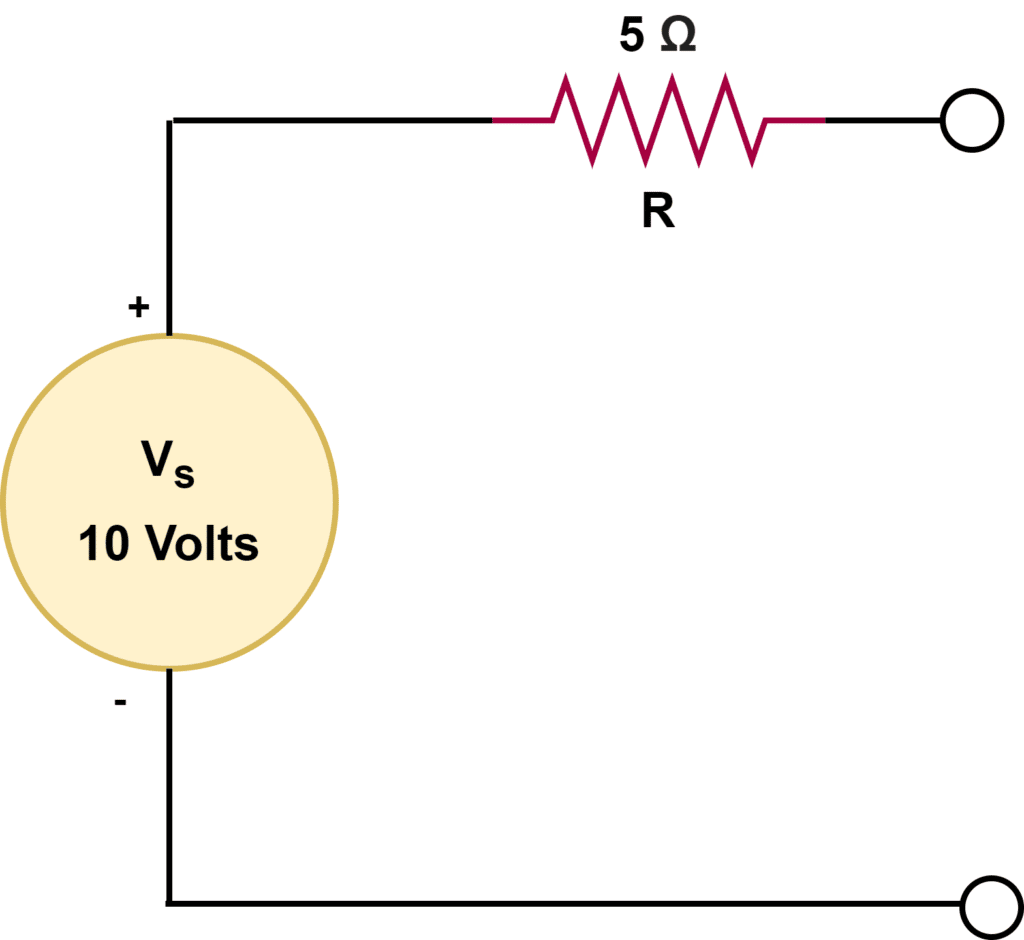
First, calculate the source current, assuming the output terminals are short-circuited.

The resistance connected in the series with the voltage source will now be connected in parallel with the current source. Thus, the equivalent current source of the above voltage source is;
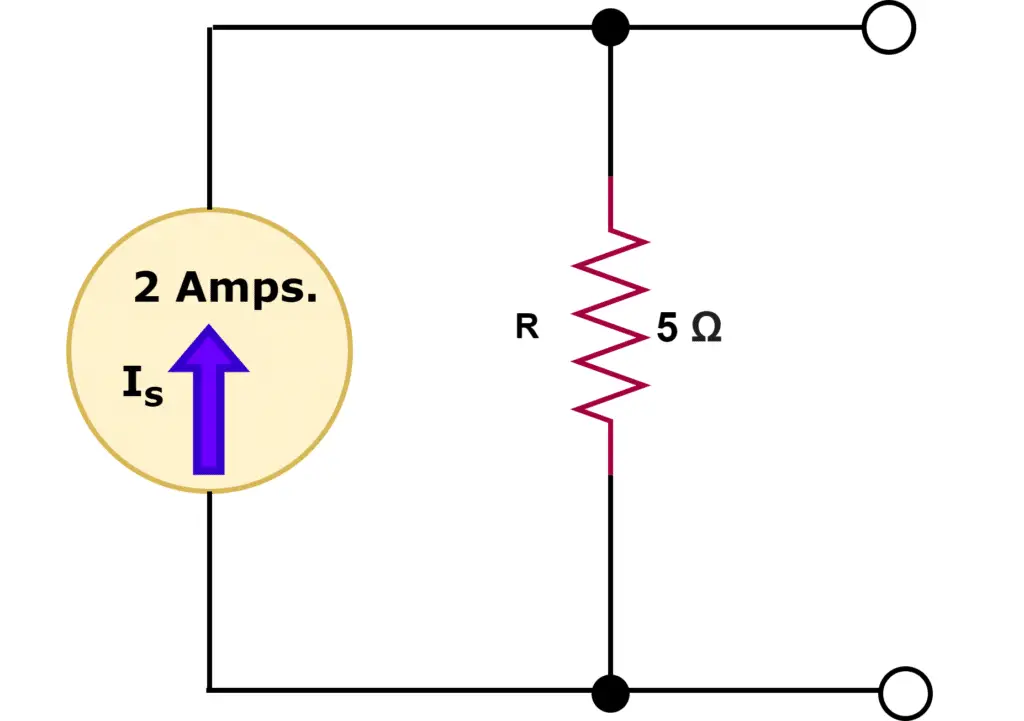
Conversion of Current Source into Voltage Source
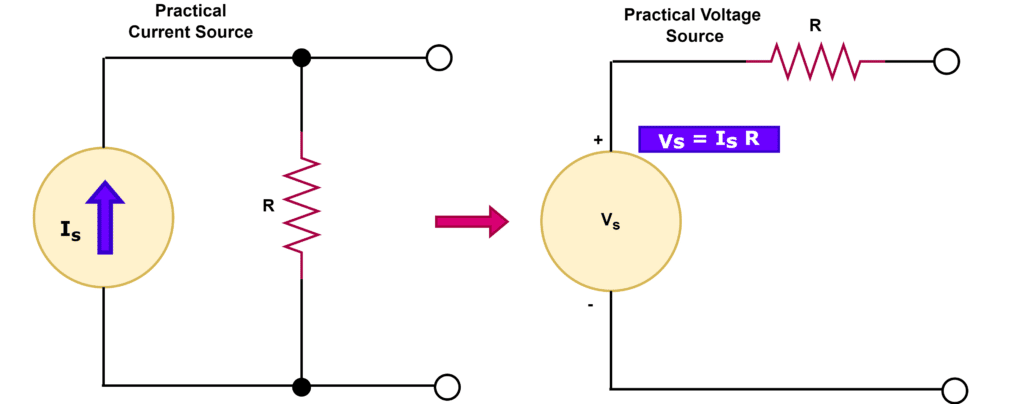
To convert a current source into a voltage source, the resistance connected in parallel with the current source is connected in the series with a voltage source. The magnitude of voltage in the voltage source can be calculated using the below-given formula.

Example,
Covert the following current source into a voltage source.
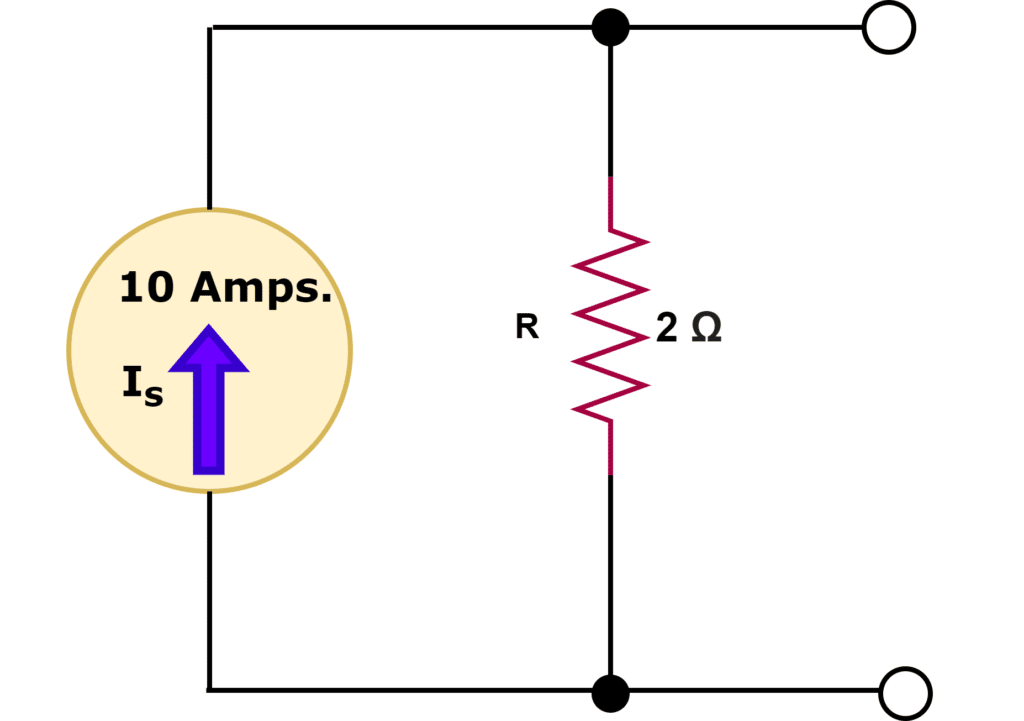
First, calculate the source voltage, assuming the output terminals are open-circuited.

The resistance connected in parallel with the current source will now be connected in series with the voltage source. Thus, the equivalent voltage source of the above current source is;
